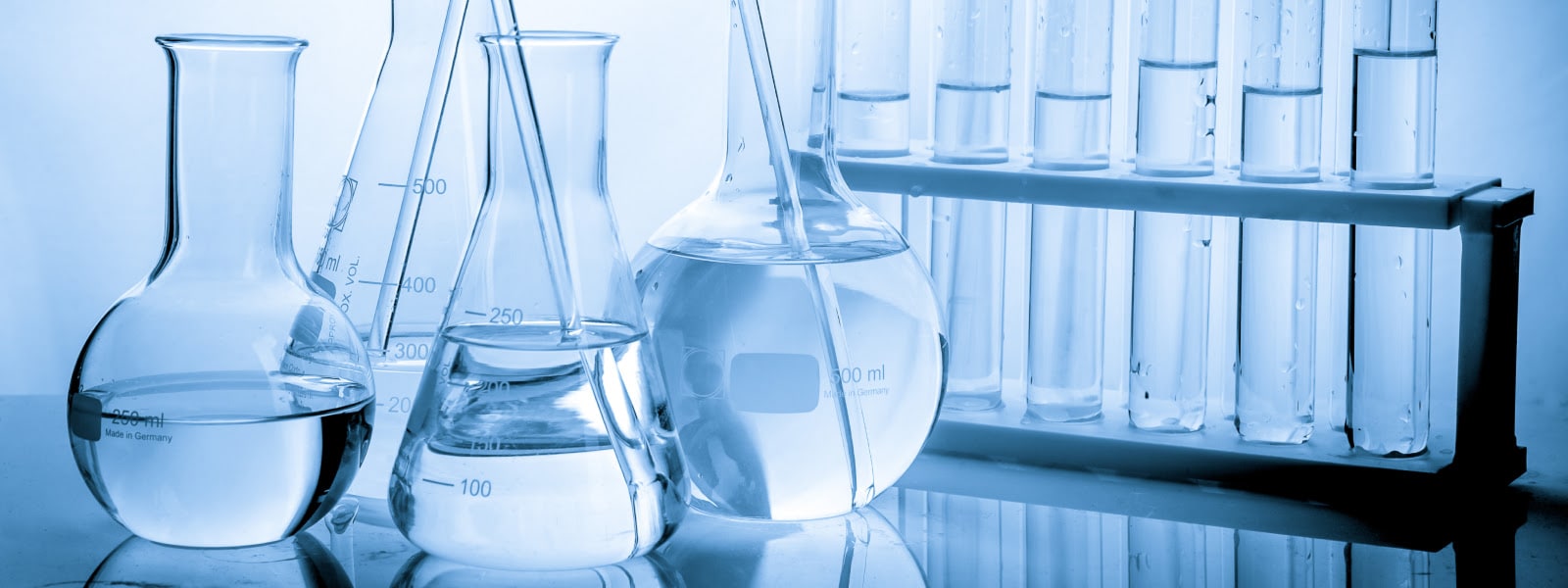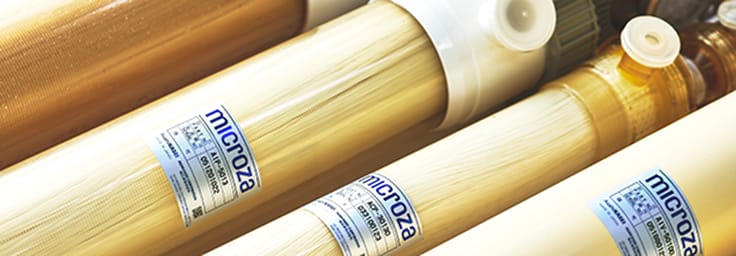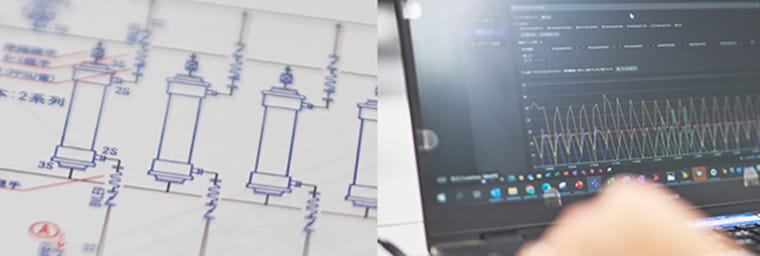Microza® Sets a New Standard for Inorganic Colloid Separation
Microza® crossflow filtration utilizes proprietary technologies such as double-skin hollow fiber membranes and chemically resistant PVDF membranes produced by the TIPS method. Compared to centrifuges and ceramic membranes, the equipment is more compact, combining energy efficiency and operational efficiency. It also supports continuous processing, enabling smooth scale-up from research and development to large-scale production.
High Purity Achievable Only with Microza®
Are you facing challenges in filtering highly dispersed, fine inorganic colloid slurries that conventional separation systems cannot adequately handle? For example, sedimentation or centrifugation based on specific gravity and filter presses may not sufficiently separate by-products at the nanometer level (such as contaminant ions or complex ions) or unreacted materials (monomers, additives, etc.). As higher purity and recovery rates are required, existing separation systems often reach their filtration precision limits.
Microza® crossflow filtration using UF or MF membranes offers a solution to these purification challenges. It can handle ultrafine particles at the nanometer scale generated during chemical synthesis, enabling efficient desalting and purification according to the required purity level. It is especially effective for the separation and concentration of inorganic colloid slurries and organic emulsions, where fine dispersion and miniaturization are progressing, ensuring high purity while removing by-products and unreacted materials effectively.
-
Features of Microza® UF Membrane ModulesUnlike standard single-skin hollow fiber UF membranes, Microza® UF membranes adopt a double-skin structure with separation functions on both inner and outer surfaces. This structure reduces the risk of leakage, as the outer surface compensates when the inner surface is loaded during purification or concentration processes. Learn More About Microza® UF Membranes
-
Features of Microza® MF Membrane ModulesMade using the proprietary TIPS (Thermally Induced Phase Separation) method, Microza® PVDF membranes offer superior chemical resistance and durability compared to conventional PVDF membranes produced by the NIPS (Non-solvent Induced Phase Separation) method. Even when filtering oxidizing slurries or undergoing repeated cleaning with oxidizing agents, they maintain a low risk of leakage and stable long-term performance. In chemical industry applications, Microza® offers a 1.4 mm φ type for micron-scale slurries and emulsions and a 2.6 mm φ type for high-concentration applications, supporting a wide range of needs. Learn More About Microza® MF Membranes
Integrated Purification and Concentration, Improved Productivity with Continuous Processing
Concentrating inorganic colloid slurries has typically required multiple devices for purification and concentration. This results in time and cost challenges, such as transferring material from a centrifuge to another concentrator.
By introducing Microza® crossflow filtration systems, both purification and concentration can be performed using a single filtration unit. This leads not only to a more compact system configuration, but also contributes to simplified production processes and reduced initial costs. Additionally, transitioning from batch to continuous operation reduces batch-related resource losses and improves overall productivity.
-
Advantages of Performing Purification and Concentration with a Single UnitCrossflow filtration systems use high-strength hollow fiber membranes that can withstand relatively high operating pressures, enabling the simultaneous purification and concentration of slurries and emulsions. Incorporating a periodic backwash sequence ensures stable filtrate flow and facilitates continuous processing. Furthermore, by outsourcing the design and manufacturing of the complete membrane filtration system, users can build an optimized solution with minimal effort.
-
Efficiency Not Achievable with CentrifugesCrossflow filtration systems use high-strength hollow fiber membranes that can withstand relatively high operating pressures, enabling simultaneous purification and concentration of slurries and emulsions. A periodic backwash sequence maintains stable flow, and the system can be easily designed for continuous operation. Full system design and manufacturing services are available to minimize user workload while delivering an optimized solution.
Lower Barriers to Scale-Up Compared to Conventional Methods
Traditionally, concentrating inorganic colloid slurries and organic emulsions has often involved centrifuges, resulting in high equipment costs and safety measures when scaling up from R&D to production, which has been a significant burden for companies.
Microza® crossflow filtration systems help resolve this issue. For example, in the research stage, pencil-type modules for beaker-scale testing allow users to easily verify the separation performance of UF or MF membranes with small samples under near-production conditions. Scaling up to full production can be achieved simply by increasing the number of membrane modules, enabling a smooth transition to systems optimized for your production scale.
Reduced Manual Labor and Dust Dispersion, Improved Work Environment
Conventional filtration equipment often presents challenges such as dust dispersion from scraping, noise, and disassembly of rotating parts, increasing operator workload and safety risks. Filter presses, candle filters, and gravity separation require scraping and washing to recover slurry, which can lead to dust issues with dried slurry. Centrifuges also pose risks from rotating parts, noise, and require regular disassembly, placing additional burdens on the work environment.
Microza® filtration systems resolve these issues. With Microza®, purification and concentration processes are completed entirely within tanks and piping, enabling significant labor savings and a greatly improved work environment. There is no noise or danger from rotating parts, and frequent disassembly of equipment is unnecessary. Compared to filter presses, no scraping is required. In combination with a spray dryer, it is also possible to obtain uniform powder particles, eliminating the regrinding step often required after press filtration.







